Special Report
The City Where the Fewest Children Live in Poverty in Every State

Published:

More than 40 million Americans live below the poverty line, and of those facing such financial hardship, children are disproportionately affected. Nearly 12.6 million children under age 18 live in households with poverty level income.
Not only are children at higher risk of poverty, they are also especially vulnerable to poverty’s harmful effects, both in the immediate and long-term. Childhood poverty can negatively impact brain development and has been linked with a greater likelihood of chronic illness, shorter life expectancy, and poor emotional and behavioral health. Those who spend some or all of their childhood in poverty are also less likely to succeed in school or be financially secure later in life.
Nationwide, an estimated 17.5% of children under age 18 live below the poverty line. And though the United States has one of the worst child poverty rates among wealthy, developed countries, in parts of the U.S., child poverty is far less common.
Using data from the U.S. Census Bureau, 24/7 Wall St. identified the city in every state with the lowest child poverty rate. For the purposes of this story, cities are defined as places with populations of at least 25,000.
Among the places on this list, the child poverty rate ranges from zero to about 20% and is below the statewide child poverty rate in nearly every case. Here is a look at the income a family needs to cover normal living expenses in every state.
Not only is child poverty less common in these places than in much of the country, but families also tend to be relatively well off. In all but three cities on this list, the median income among households with children is higher than it is across the state as a whole, and in most of these places, the typical household with children earns over $100,000 a year. Here is a look at the richest town in every state.
Households with two parents are more likely to be financially secure than those headed by a single parent, and single-mother households are especially vulnerable to financial insecurity. In most cities on this list, the share of households with children headed by a single mother is below the comparable statewide share.
Click here to see the city with the lowest child poverty rate in every state.
Click here to read our detailed methodology.
Alabama: Vestavia Hills
> Child poverty rate: 3.0% (Alabama: 22.7%)
> Median family income, households with children: $155,323 (Alabama: $64,790)
> Share of households with children receiving SNAP benefits: 2.2% (Alabama: 22.4%)
> Households headed by single mothers: 6.8% (Alabama: 13.3%)
> No. of cities considered in ranking: 22
[in-text-ad]

Alaska: Juneau
> Child poverty rate: 8.7% (Alaska: 13.8%)
> Median family income, households with children: $100,186 (Alaska: $88,245)
> Share of households with children receiving SNAP benefits: 11.1% (Alaska: 15.9%)
> Households headed by single mothers: 8.7% (Alaska: 10.6%)
> No. of cities considered in ranking: 3

Arizona: Gilbert
> Child poverty rate: 4.8% (Arizona: 20.0%)
> Median family income, households with children: $114,164 (Arizona: $69,758)
> Share of households with children receiving SNAP benefits: 4.8% (Arizona: 19.3%)
> Households headed by single mothers: 8.7% (Arizona: 11.9%)
> No. of cities considered in ranking: 36
Arkansas: Bentonville
> Child poverty rate: 7.4% (Arkansas: 22.0%)
> Median family income, households with children: $111,767 (Arkansas: $59,204)
> Share of households with children receiving SNAP benefits: 3.5% (Arkansas: 18.7%)
> Households headed by single mothers: 8.8% (Arkansas: 13.2%)
> No. of cities considered in ranking: 18
[in-text-ad-2]

California: San Carlos
> Child poverty rate: 1.7% (California: 16.8%)
> Median family income, households with children: $250,000+ (California: $84,790)
> Share of households with children receiving SNAP benefits: 0.2% (California: 16.1%)
> Households headed by single mothers: 6.4% (California: 10.8%)
> No. of cities considered in ranking: 294

Colorado: Highlands Ranch
> Child poverty rate: 1.6% (Colorado: 11.5%)
> Median family income, households with children: $149,958 (Colorado: $91,425)
> Share of households with children receiving SNAP benefits: 1.3% (Colorado: 11.6%)
> Households headed by single mothers: 6.0% (Colorado: 9.0%)
> No. of cities considered in ranking: 32
[in-text-ad]

Connecticut: Milford
> Child poverty rate: 4.3% (Connecticut: 13.0%)
> Median family income, households with children: $135,800 (Connecticut: $100,115)
> Share of households with children receiving SNAP benefits: 3.2% (Connecticut: 15.3%)
> Households headed by single mothers: 6.2% (Connecticut: 11.4%)
> No. of cities considered in ranking: 24
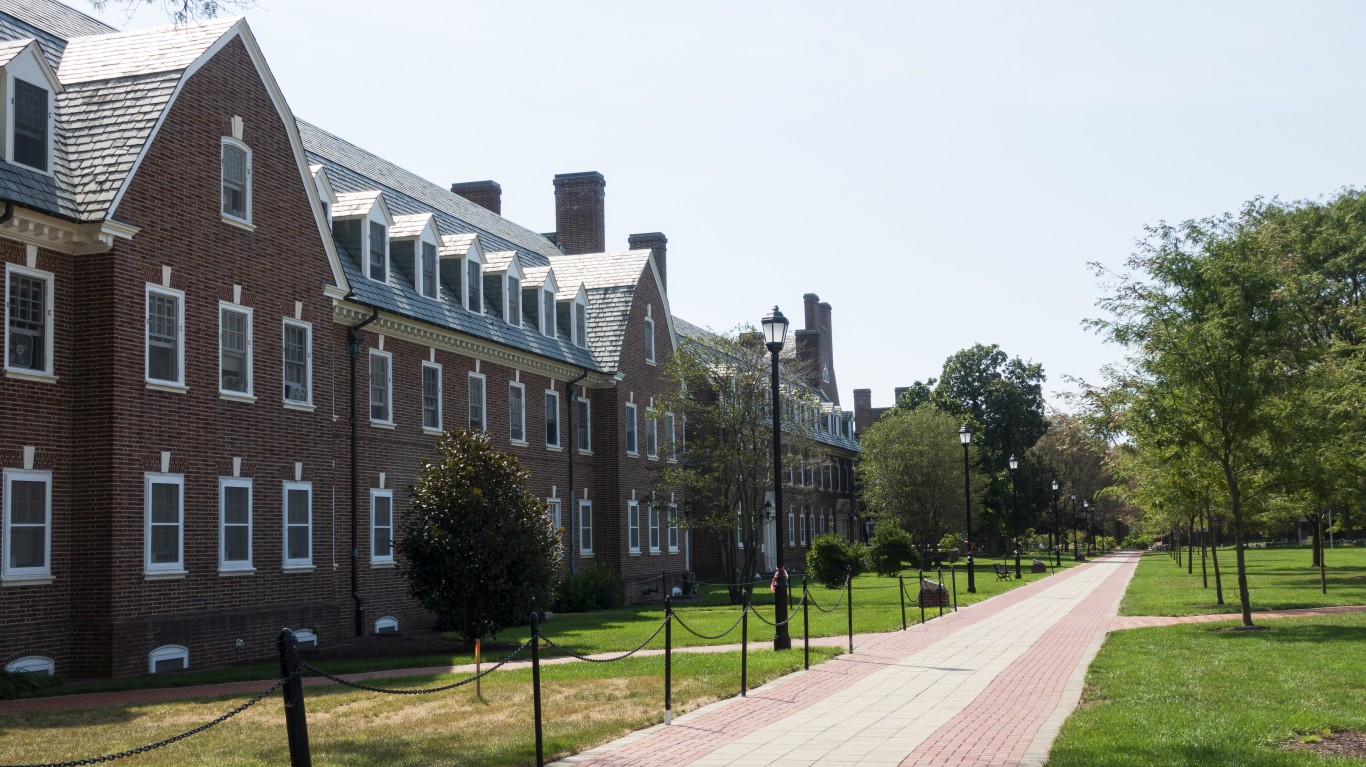
Delaware: Newark
> Child poverty rate: 8.3% (Delaware: 17.2%)
> Median family income, households with children: $97,625 (Delaware: $79,268)
> Share of households with children receiving SNAP benefits: 16.8% (Delaware: 19.7%)
> Households headed by single mothers: 5.3% (Delaware: 12.1%)
> No. of cities considered in ranking: 3

Florida: Palm Beach Gardens
> Child poverty rate: 2.7% (Florida: 18.7%)
> Median family income, households with children: $119,207 (Florida: $65,053)
> Share of households with children receiving SNAP benefits: 3.7% (Florida: 22.7%)
> Households headed by single mothers: 6.3% (Florida: 11.4%)
> No. of cities considered in ranking: 148
[in-text-ad-2]
Georgia: Johns Creek
> Child poverty rate: 3.7% (Georgia: 20.1%)
> Median family income, households with children: $148,997 (Georgia: $70,326)
> Share of households with children receiving SNAP benefits: 5.1% (Georgia: 19.6%)
> Households headed by single mothers: 7.4% (Georgia: 14.3%)
> No. of cities considered in ranking: 45

Hawaii: East Honolulu
> Child poverty rate: 2.2% (Hawaii: 11.7%)
> Median family income, households with children: $163,710 (Hawaii: $91,696)
> Share of households with children receiving SNAP benefits: 1.3% (Hawaii: 17.0%)
> Households headed by single mothers: 4.7% (Hawaii: 9.7%)
> No. of cities considered in ranking: 9
[in-text-ad]

Idaho: Eagle
> Child poverty rate: 5.3% (Idaho: 14.4%)
> Median family income, households with children: $141,778 (Idaho: $69,851)
> Share of households with children receiving SNAP benefits: 3.2% (Idaho: 15.3%)
> Households headed by single mothers: 4.5% (Idaho: 8.4%)
> No. of cities considered in ranking: 13
Illinois: Oswego
> Child poverty rate: 0.0% reported (Illinois: 16.2%)
> Median family income, households with children: $116,761 (Illinois: $83,907)
> Share of households with children receiving SNAP benefits: 12.7% (Illinois: 19.4%)
> Households headed by single mothers: 6.1% (Illinois: 11.7%)
> No. of cities considered in ranking: 85

Indiana: Granger
> Child poverty rate: 2.1% (Indiana: 17.6%)
> Median family income, households with children: $120,433 (Indiana: $70,859)
> Share of households with children receiving SNAP benefits: 4.8% (Indiana: 16.0%)
> Households headed by single mothers: 4.4% (Indiana: 12.0%)
> No. of cities considered in ranking: 38
[in-text-ad-2]
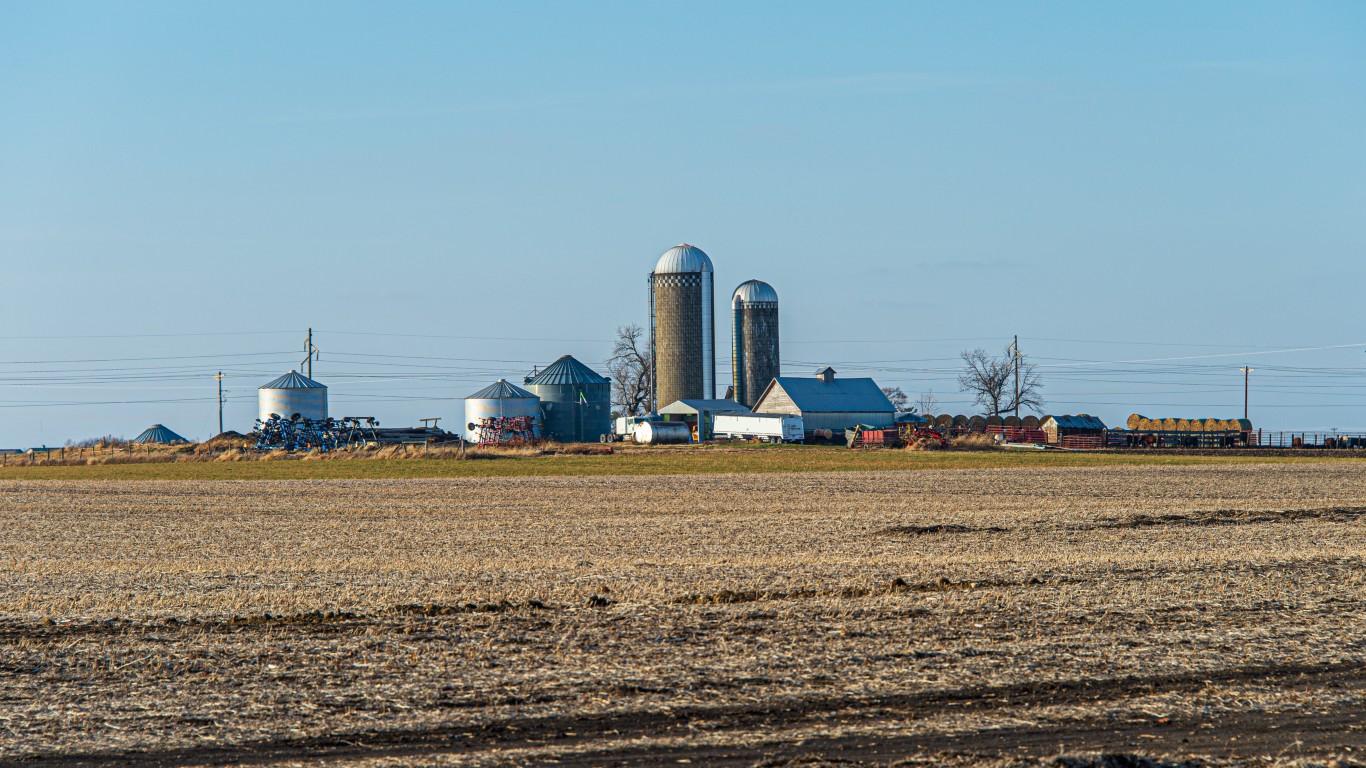
Iowa: Ankeny
> Child poverty rate: 3.7% (Iowa: 13.3%)
> Median family income, households with children: $114,893 (Iowa: $79,139)
> Share of households with children receiving SNAP benefits: 4.5% (Iowa: 16.7%)
> Households headed by single mothers: 8.2% (Iowa: 10.3%)
> No. of cities considered in ranking: 18

Kansas: Leawood
> Child poverty rate: 1.1% (Kansas: 13.9%)
> Median family income, households with children: $223,182 (Kansas: $74,882)
> Share of households with children receiving SNAP benefits: 1.0% (Kansas: 11.6%)
> Households headed by single mothers: 1.3% (Kansas: 10.4%)
> No. of cities considered in ranking: 15
[in-text-ad]
Kentucky: Florence
> Child poverty rate: 8.3% (Kentucky: 22.2%)
> Median family income, households with children: $68,255 (Kentucky: $65,096)
> Share of households with children receiving SNAP benefits: 11.8% (Kentucky: 20.8%)
> Households headed by single mothers: 14.6% (Kentucky: 12.2%)
> No. of cities considered in ranking: 15
Louisiana: Prairieville
> Child poverty rate: 5.1% (Louisiana: 26.3%)
> Median family income, households with children: $122,165 (Louisiana: $61,722)
> Share of households with children receiving SNAP benefits: 7.5% (Louisiana: 24.9%)
> Households headed by single mothers: 11.7% (Louisiana: 16.0%)
> No. of cities considered in ranking: 18
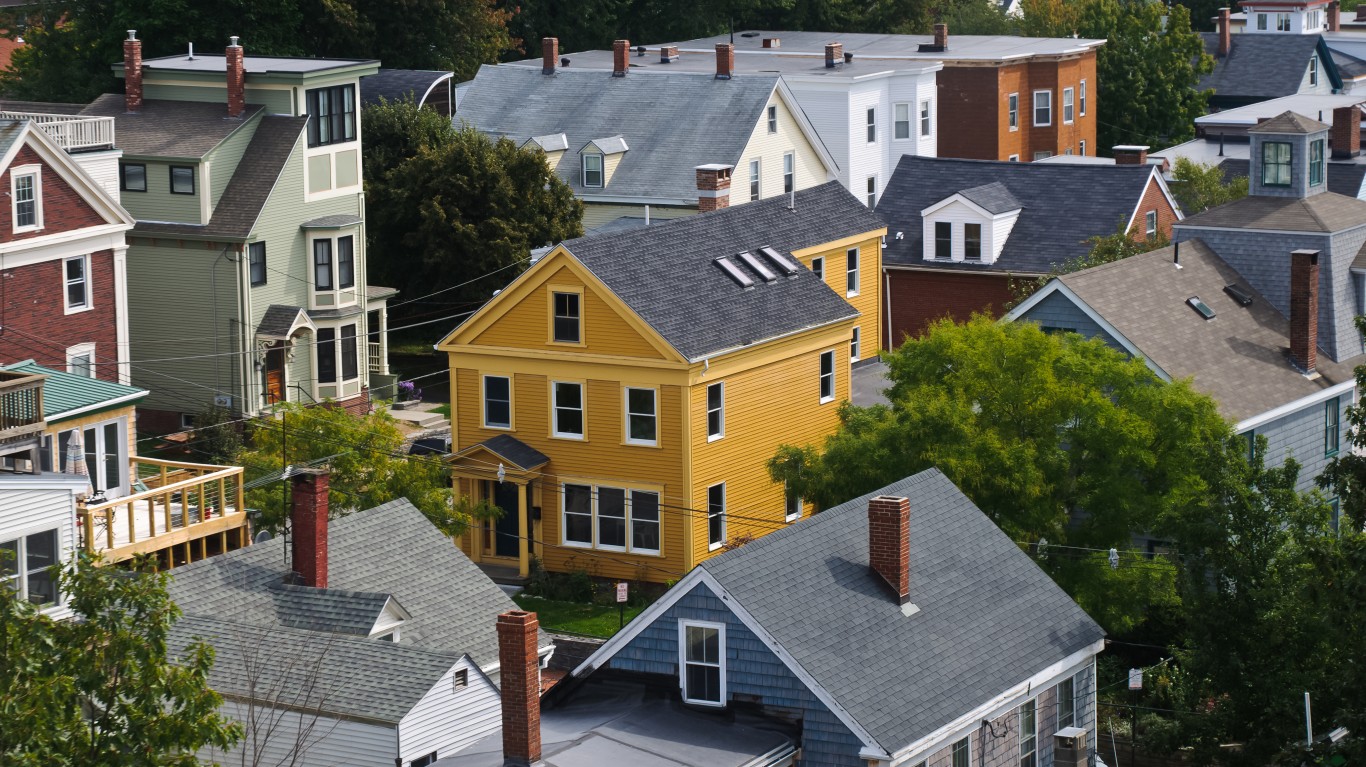
Maine: Portland
> Child poverty rate: 15.9% (Maine: 14.0%)
> Median family income, households with children: $80,998 (Maine: $76,852)
> Share of households with children receiving SNAP benefits: 19.7% (Maine: 18.4%)
> Households headed by single mothers: 10.7% (Maine: 9.1%)
> No. of cities considered in ranking: 3
[in-text-ad-2]

Maryland: Ilchester
> Child poverty rate: 1.8% (Maryland: 11.6%)
> Median family income, households with children: $154,605 (Maryland: $103,641)
> Share of households with children receiving SNAP benefits: 3.4% (Maryland: 15.5%)
> Households headed by single mothers: 7.4% (Maryland: 12.2%)
> No. of cities considered in ranking: 51

Massachusetts: Lexington
> Child poverty rate: 2.5% (Massachusetts: 12.2%)
> Median family income, households with children: $250,000+ (Massachusetts: $109,908)
> Share of households with children receiving SNAP benefits: 0.8% (Massachusetts: 15.8%)
> Households headed by single mothers: 3.6% (Massachusetts: 11.1%)
> No. of cities considered in ranking: 58
[in-text-ad]
Michigan: Novi
> Child poverty rate: 2.9% (Michigan: 18.8%)
> Median family income, households with children: $124,814 (Michigan: $73,187)
> Share of households with children receiving SNAP benefits: 5.0% (Michigan: 19.7%)
> Households headed by single mothers: 6.8% (Michigan: 11.5%)
> No. of cities considered in ranking: 44

Minnesota: Minnetonka
> Child poverty rate: 2.2% (Minnesota: 11.6%)
> Median family income, households with children: $154,053 (Minnesota: $95,628)
> Share of households with children receiving SNAP benefits: 3.0% (Minnesota: 11.6%)
> Households headed by single mothers: 6.8% (Minnesota: 9.8%)
> No. of cities considered in ranking: 40
Mississippi: Madison
> Child poverty rate: 4.5% (Mississippi: 27.6%)
> Median family income, households with children: $155,903 (Mississippi: $54,822)
> Share of households with children receiving SNAP benefits: 0.0% reported (Mississippi: 24.2%)
> Households headed by single mothers: 3.2% (Mississippi: 16.8%)
> No. of cities considered in ranking: 14
[in-text-ad-2]
Missouri: Wildwood
> Child poverty rate: 2.7% (Missouri: 17.4%)
> Median family income, households with children: $161,906 (Missouri: $72,033)
> Share of households with children receiving SNAP benefits: 0.7% (Missouri: 17.2%)
> Households headed by single mothers: 4.0% (Missouri: 11.5%)
> No. of cities considered in ranking: 27

Montana: Bozeman
> Child poverty rate: 8.6% (Montana: 15.2%)
> Median family income, households with children: $76,333 (Montana: $71,986)
> Share of households with children receiving SNAP benefits: 9.6% (Montana: 16.2%)
> Households headed by single mothers: 7.5% (Montana: 8.4%)
> No. of cities considered in ranking: 6
[in-text-ad]
Nebraska: Bellevue
> Child poverty rate: 10.8% (Nebraska: 12.2%)
> Median family income, households with children: $76,360 (Nebraska: $77,982)
> Share of households with children receiving SNAP benefits: 16.1% (Nebraska: 13.9%)
> Households headed by single mothers: 12.0% (Nebraska: 10.4%)
> No. of cities considered in ranking: 6

Nevada: Summerlin South
> Child poverty rate: 5.8% (Nevada: 17.6%)
> Median family income, households with children: $124,028 (Nevada: $67,738)
> Share of households with children receiving SNAP benefits: 4.0% (Nevada: 18.7%)
> Households headed by single mothers: 5.5% (Nevada: 12.8%)
> No. of cities considered in ranking: 14

New Hampshire: Dover
> Child poverty rate: 8.4% (New Hampshire: 8.9%)
> Median family income, households with children: $111,578 (New Hampshire: $100,798)
> Share of households with children receiving SNAP benefits: 11.6% (New Hampshire: 11.3%)
> Households headed by single mothers: 7.5% (New Hampshire: 8.2%)
> No. of cities considered in ranking: 5
[in-text-ad-2]

New Jersey: Princeton
> Child poverty rate: 1.7% (New Jersey: 13.3%)
> Median family income, households with children: $250,000+ (New Jersey: $106,937)
> Share of households with children receiving SNAP benefits: 0.9% (New Jersey: 12.6%)
> Households headed by single mothers: 5.5% (New Jersey: 10.3%)
> No. of cities considered in ranking: 35
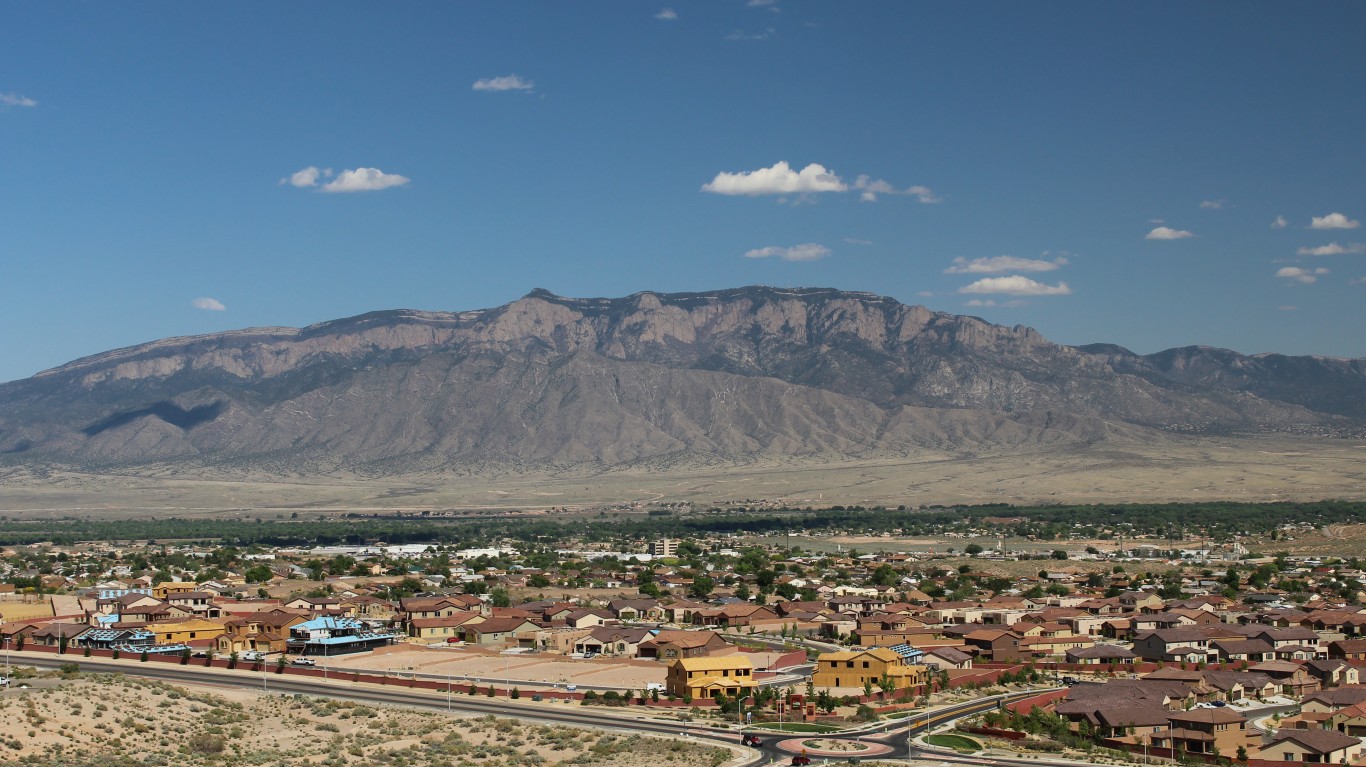
New Mexico: Rio Rancho
> Child poverty rate: 10.9% (New Mexico: 25.6%)
> Median family income, households with children: $78,225 (New Mexico: $54,886)
> Share of households with children receiving SNAP benefits: 17.1% (New Mexico: 28.4%)
> Households headed by single mothers: 11.6% (New Mexico: 14.0%)
> No. of cities considered in ranking: 11
[in-text-ad]
New York: Commack
> Child poverty rate: 1.8% (New York: 18.7%)
> Median family income, households with children: $181,175 (New York: $83,272)
> Share of households with children receiving SNAP benefits: 2.9% (New York: 19.4%)
> Households headed by single mothers: 2.4% (New York: 12.4%)
> No. of cities considered in ranking: 58
North Carolina: Holly Springs
> Child poverty rate: 2.7% (North Carolina: 20.0%)
> Median family income, households with children: $125,955 (North Carolina: $68,688)
> Share of households with children receiving SNAP benefits: 3.5% (North Carolina: 20.0%)
> Households headed by single mothers: 7.9% (North Carolina: 12.5%)
> No. of cities considered in ranking: 40

North Dakota: Bismarck
> Child poverty rate: 6.4% (North Dakota: 11.1%)
> Median family income, households with children: $91,055 (North Dakota: $86,414)
> Share of households with children receiving SNAP benefits: 11.0% (North Dakota: 10.9%)
> Households headed by single mothers: 13.3% (North Dakota: 9.2%)
> No. of cities considered in ranking: 6
[in-text-ad-2]
Ohio: Upper Arlington
> Child poverty rate: 1.2% (Ohio: 19.1%)
> Median family income, households with children: $169,242 (Ohio: $72,130)
> Share of households with children receiving SNAP benefits: 1.4% (Ohio: 19.8%)
> Households headed by single mothers: 5.8% (Ohio: 12.8%)
> No. of cities considered in ranking: 60
Oklahoma: Owasso
> Child poverty rate: 6.6% (Oklahoma: 20.7%)
> Median family income, households with children: $87,777 (Oklahoma: $62,535)
> Share of households with children receiving SNAP benefits: 9.9% (Oklahoma: 20.6%)
> Households headed by single mothers: 10.4% (Oklahoma: 12.5%)
> No. of cities considered in ranking: 16
[in-text-ad]

Oregon: Lake Oswego
> Child poverty rate: 2.1% (Oregon: 15.0%)
> Median family income, households with children: $163,739 (Oregon: $78,939)
> Share of households with children receiving SNAP benefits: 4.2% (Oregon: 21.6%)
> Households headed by single mothers: 6.3% (Oregon: 9.9%)
> No. of cities considered in ranking: 23

Pennsylvania: Bethel Park
> Child poverty rate: 3.8% (Pennsylvania: 16.7%)
> Median family income, households with children: $120,571 (Pennsylvania: $81,257)
> Share of households with children receiving SNAP benefits: 5.5% (Pennsylvania: 20.3%)
> Households headed by single mothers: 4.5% (Pennsylvania: 11.1%)
> No. of cities considered in ranking: 22

Rhode Island: Warwick
> Child poverty rate: 7.0% (Rhode Island: 15.6%)
> Median family income, households with children: $88,135 (Rhode Island: $83,161)
> Share of households with children receiving SNAP benefits: 17.4% (Rhode Island: 21.0%)
> Households headed by single mothers: 9.0% (Rhode Island: 12.5%)
> No. of cities considered in ranking: 6
[in-text-ad-2]

South Carolina: Mount Pleasant
> Child poverty rate: 4.7% (South Carolina: 21.2%)
> Median family income, households with children: $142,830 (South Carolina: $64,942)
> Share of households with children receiving SNAP benefits: 1.6% (South Carolina: 20.0%)
> Households headed by single mothers: 6.1% (South Carolina: 13.4%)
> No. of cities considered in ranking: 19

South Dakota: Sioux Falls
> Child poverty rate: 10.7% (South Dakota: 16.1%)
> Median family income, households with children: $77,368 (South Dakota: $76,789)
> Share of households with children receiving SNAP benefits: 15.7% (South Dakota: 15.8%)
> Households headed by single mothers: 13.8% (South Dakota: 10.3%)
> No. of cities considered in ranking: 3
[in-text-ad]
Tennessee: Germantown
> Child poverty rate: 1.1% (Tennessee: 20.8%)
> Median family income, households with children: $156,439 (Tennessee: $65,852)
> Share of households with children receiving SNAP benefits: 1.6% (Tennessee: 20.9%)
> Households headed by single mothers: 3.2% (Tennessee: 12.4%)
> No. of cities considered in ranking: 27
Texas: Southlake
> Child poverty rate: 1.6% (Texas: 20.0%)
> Median family income, households with children: $250,000+ (Texas: $71,693)
> Share of households with children receiving SNAP benefits: 2.8% (Texas: 19.3%)
> Households headed by single mothers: 2.9% (Texas: 13.2%)
> No. of cities considered in ranking: 125

Utah: South Jordan
> Child poverty rate: 2.2% (Utah: 9.9%)
> Median family income, households with children: $122,635 (Utah: $84,298)
> Share of households with children receiving SNAP benefits: 2.5% (Utah: 9.4%)
> Households headed by single mothers: 4.1% (Utah: 7.7%)
> No. of cities considered in ranking: 36
[in-text-ad-2]

Vermont: Burlington*
> Child poverty rate: 20.4% (Vermont: 12.3%)
> Median family income, households with children: $82,200 (Vermont: $81,902)
> Share of households with children receiving SNAP benefits: 17.6% (Vermont: 15.2%)
> Households headed by single mothers: 13.5% (Vermont: 9.5%)
> No. of cities considered in ranking: 1
*Because Burlington is the only eligible city in Vermont, it is the city with the lowest child poverty rate by default.

Virginia: Burke
> Child poverty rate: 0.7% (Virginia: 13.1%)
> Median family income, households with children: $156,737 (Virginia: $93,828)
> Share of households with children receiving SNAP benefits: 3.7% (Virginia: 13.1%)
> Households headed by single mothers: 5.4% (Virginia: 10.8%)
> No. of cities considered in ranking: 40
[in-text-ad]

Washington: Redmond
> Child poverty rate: 3.3% (Washington: 12.6%)
> Median family income, households with children: $179,798 (Washington: $90,447)
> Share of households with children receiving SNAP benefits: 3.2% (Washington: 16.0%)
> Households headed by single mothers: 5.3% (Washington: 9.4%)
> No. of cities considered in ranking: 47

West Virginia: Wheeling
> Child poverty rate: 14.3% (West Virginia: 23.1%)
> Median family income, households with children: $47,548 (West Virginia: $59,938)
> Share of households with children receiving SNAP benefits: 26.5% (West Virginia: 26.8%)
> Households headed by single mothers: 15.4% (West Virginia: 10.3%)
> No. of cities considered in ranking: 5
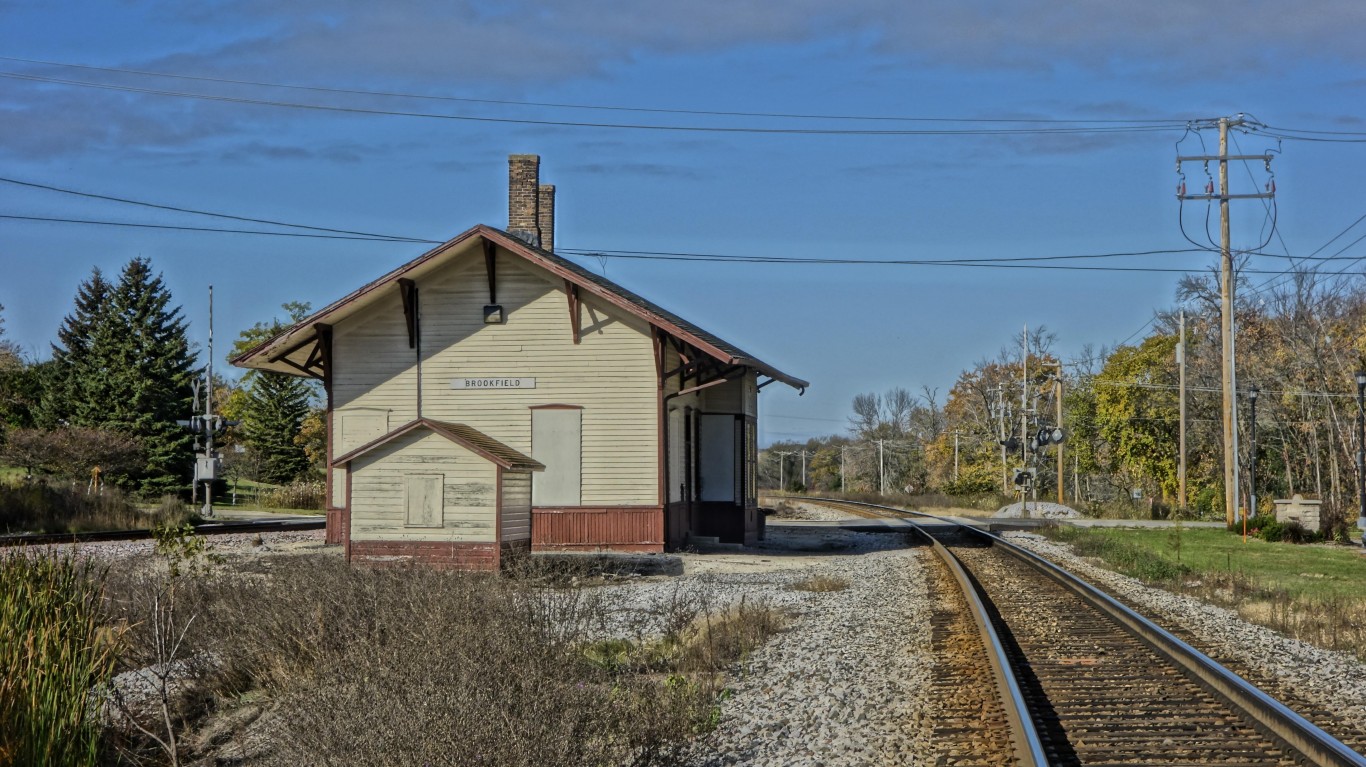
Wisconsin: Brookfield
> Child poverty rate: 2.1% (Wisconsin: 14.2%)
> Median family income, households with children: $149,481 (Wisconsin: $81,197)
> Share of households with children receiving SNAP benefits: 2.5% (Wisconsin: 16.6%)
> Households headed by single mothers: 2.7% (Wisconsin: 10.2%)
> No. of cities considered in ranking: 32
[in-text-ad-2]

Wyoming: Cheyenne
> Child poverty rate: 10.6% (Wyoming: 12.3%)
> Median family income, households with children: $78,880 (Wyoming: $80,825)
> Share of households with children receiving SNAP benefits: 10.3% (Wyoming: 9.2%)
> Households headed by single mothers: 8.0% (Wyoming: 8.7%)
> No. of cities considered in ranking: 4
Methodology
To determine the city with the highest child poverty rate in every state, 24/7 Wall St. reviewed five-year estimates of child poverty rates from the U.S. Census Bureau’s 2020 American Community Survey.
We used census “place” geographies — a category that includes incorporated legal entities and census-designated statistical entities. We defined cities based on a population threshold — census places needed to have a population of at least 25,000 to be considered.
Cities were excluded if the child poverty rate was not available in the 2020 ACS, if the number of children for whom poverty status was determined was lower than 500, or if the sampling error associated with a city’s data was deemed too high.
The sampling error was defined as too high if the coefficient of variation — a statistical assessment of how reliable an estimate is — for a city’s child poverty rate was above 15% and greater than two standard deviations above the mean CV for all cities’ child poverty rates. We similarly excluded cities that had a sampling error too high for their population, using the same definition.
Cities were ranked based on the share of children living in poverty. To break ties, we used the number of children living in poverty.
Additional information on median income for families with children, the share of households with children receiving benefits from the Supplemental Nutrition Assistance Program, and the share of households headed by single mothers are also five-year estimates from the 2020 ACS. Because the Census Bureau didn’t release one-year estimates for 2020 due to data collection issues caused by the COVID-19 pandemic, all ACS data are five-year estimates.
If you’re one of the over 4 Million Americans set to retire this year, you may want to pay attention.
Finding a financial advisor who puts your interest first can be the difference between a rich retirement and barely getting by, and today it’s easier than ever. SmartAsset’s free tool matches you with up to three fiduciary financial advisors that serve your area in minutes. Each advisor has been carefully vetted, and must act in your best interests. Start your search now.
Don’t waste another minute; get started right here and help your retirement dreams become a retirement reality.
Thank you for reading! Have some feedback for us?
Contact the 24/7 Wall St. editorial team.